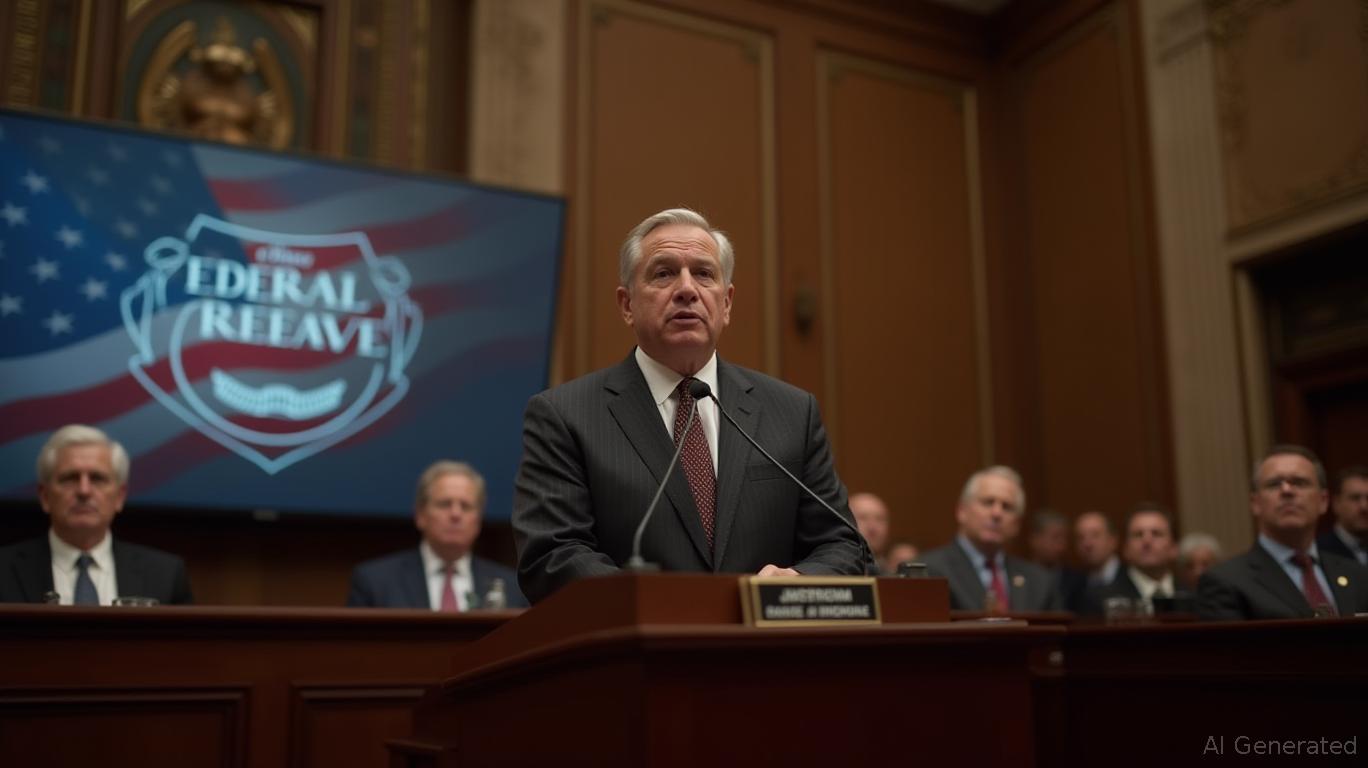The Fed's Independence Hangs in the Balance as Trump Seeks a New Leader
- Trump’s administration evaluates 11 candidates for Fed chair as Powell’s term ends in May 2026. - Chris Waller (27% PolyMarket odds) and Kevin Warsh emerge as top contenders with market expertise. - Trump’s attempt to remove Fed Governor Lisa Cook sparks legal battles and independence concerns. - Political influence risks Fed’s independence, potentially destabilizing U.S. monetary policy and global economy.
The Federal Reserve is on the verge of a leadership transition as the term of Chair Jerome Powell is set to expire in May 2026. With the Trump administration evaluating a list of 11 potential candidates for the role, the likelihood of identifying a successor has gained traction, particularly given the rising odds for certain individuals on betting platforms like PolyMarket. The process is set to begin in earnest after Labor Day, with U.S. Treasury Secretary Scott Bessent confirming that interviews for candidates will commence at that time and a shortlist of three to four candidates will be presented to President Trump afterward [5].
Mohamed El-Erian, chief economic advisor at Allianz, has highlighted Rick Rieder, BlackRock’s Chief Investment Officer of Global Fixed Income, and former Fed Governor Kevin Warsh as the strongest candidates for the position. El-Erian praised their deep understanding of markets, communication skills, and experience, noting that both would be well-equipped to lead the central bank [1]. Rieder, when asked about his potential nomination, emphasized the importance of lowering interest rates in the coming year, stating that any Fed chair must address the need for rate reductions to support the economy [1].
Chris Waller, another prominent figure on the list of potential replacements, is currently the frontrunner in the PolyMarket odds, with a 27% chance of being named the next Fed chair this year. His approach to monetary policy, which relies heavily on forecasting and anticipatory measures, aligns with the Trump administration’s desire for a more proactive stance on rate-setting [5]. Kevin Hassett and Kevin Warsh are also notable contenders, with 11.2% and 9.3% odds, respectively, though the market still favors the likelihood that a successor will not be named this year, with a 37% probability of that outcome [5].
The process of selecting a new Fed chair is complicated by the broader political landscape, particularly the recent attempt by President Trump to remove Federal Reserve Governor Lisa Cook. This move, which has sparked legal and constitutional debates, has raised concerns about the independence of the Fed and the potential for political interference in monetary policy [2]. Cook has vowed to fight the removal in court, with her legal team arguing that Trump lacks the authority to fire her based on the allegations made in a referral letter from a Trump-appointed official [2].
Analysts warn that the Fed’s independence is a critical factor in maintaining economic stability. As demonstrated historically, when central bank policy is driven by political considerations, the risk of inflationary pressures and economic instability rises. The potential replacement of Cook with a Trump appointee would give the administration a majority on the Fed board, increasing its influence over the central bank’s decisions [4]. This could have long-term implications for U.S. monetary policy and the global economy, as the Fed plays a pivotal role in shaping interest rates and managing inflation [4].
As the administration moves forward with its evaluation of candidates, the process will be closely monitored by financial markets and economic observers. The appointment of the next Fed chair will carry significant weight, not only in shaping the direction of U.S. monetary policy but also in determining the broader economic trajectory in the coming years [5].
Source:

Disclaimer: The content of this article solely reflects the author's opinion and does not represent the platform in any capacity. This article is not intended to serve as a reference for making investment decisions.
You may also like
$8.8 billion outflow countdown: MSTR is becoming the abandoned child of global index funds
The final result will be revealed on January 15, 2026, and the market has already started to vote with its feet.

Deconstructing DAT: Beyond mNAV, How to Identify "Real vs. Fake HODLing"?
There is only one iron rule for investing in DAT: ignore premium bubbles and only invest in those with a genuine flywheel of continuously increasing "crypto per share."

Empowered by AI Avatars, How Does TwinX Create Immersive Interaction and a Value Closed Loop?
1. **Challenges in the Creator Economy**: Web2 content platforms suffer from issues such as opaque algorithms, non-transparent distribution, unclear commission rates, and high costs for fan migration, making it difficult for creators to control their own data and earnings. 2. **Integration of AI and Web3**: The development of AI technology, especially AI Avatar technology, combined with Web3's exploration of the creator economy, offers new solutions aimed at breaking the control of centralized platforms and reconstructing content production and value distribution. 3. **Positioning of the TwinX Platform**: TwinX is an AI-driven Web3 short video social platform that aims to reconstruct content, interaction, and value distribution through AI avatars, immersive interactions, and a decentralized value system, enabling creators to own their data and income. 4. **Core Features of TwinX**: These include AI avatar technology, which allows creators to generate a learnable, configurable, and sustainably operable "second persona", as well as a closed-loop commercialization pathway that integrates content creation, interaction, and monetization. 5. **Web3 Characteristics**: TwinX embodies the assetization and co-governance features of Web3. It utilizes blockchain to confirm and record interactive behaviors, turning user activities into traceable assets, and enables participants to engage in platform governance through tokens, thus integrating the creator economy with community governance.

Aster CEO explains in detail the vision of Aster privacy L1 chain, reshaping the decentralized trading experience
Aster is set to launch a privacy-focused Layer 1 (L1) public chain, along with detailed plans for token empowerment, global market expansion, and liquidity strategies.
